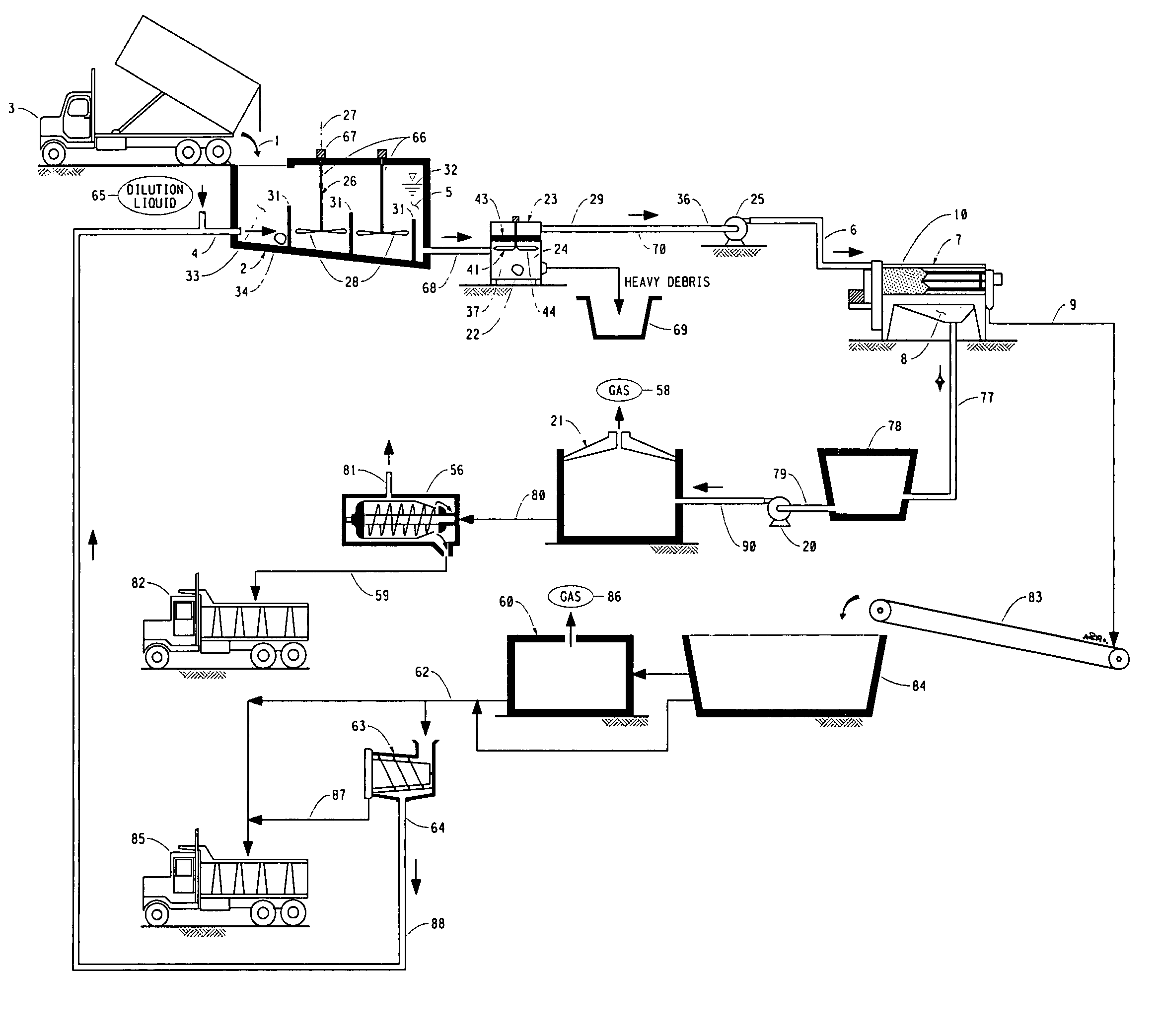Process of treating organic waste for anaerobic digestion
an organic waste and anaerobic digestion technology, applied in the field of organic waste processing and equipment, can solve the problems of carbon dioxide gas, major world wide problem of municipal solid waste collection and disposal, serious depletion of suitable sites, etc., and achieve the effects of easy and inexpensive maintenance, easy and safe operation, and low initial cos
- Summary
- Abstract
- Description
- Claims
- Application Information
AI Technical Summary
Benefits of technology
Problems solved by technology
Method used
Image
Examples
Embodiment Construction
[0014]The process of the present invention for treating organic waste for anaerobic digestion of biogenic-organic substances, comprises the following process steps: preparing a waste-slurry from organic waste; transferring the waste-slurry to a paddle pulper / finisher 7; forming a finisher-slurry 52 in the paddle pulper / finisher and separating a pulp 8 and a pomace 9 from the finisher-slurry 52 in the paddle pulper / finisher 7, the paddle pulper / finisher 7 having a cylindrical screen body 10 formed with small discreetly spaced openings 11 throughout the body between inlet and outlet end openings 12, and 13; at least one elongated paddle 14 extending a substantial portion of the length of the cylindrical screen body 10 carried on a rotating paddle shaft 15 having an axis 16 concentric with the longitudinal axis 17 of the cylindrical screen 10, and the paddle 14 being formed with a paddle edge 18 positioned in close proximity to the cylindrical screen body 10; the paddle 14 having a pit...
PUM
| Property | Measurement | Unit |
|---|---|---|
| diameter | aaaaa | aaaaa |
| chemical oxygen demand | aaaaa | aaaaa |
| Rockwell hardness | aaaaa | aaaaa |
Abstract
Description
Claims
Application Information
 Login to View More
Login to View More - R&D
- Intellectual Property
- Life Sciences
- Materials
- Tech Scout
- Unparalleled Data Quality
- Higher Quality Content
- 60% Fewer Hallucinations
Browse by: Latest US Patents, China's latest patents, Technical Efficacy Thesaurus, Application Domain, Technology Topic, Popular Technical Reports.
© 2025 PatSnap. All rights reserved.Legal|Privacy policy|Modern Slavery Act Transparency Statement|Sitemap|About US| Contact US: help@patsnap.com



